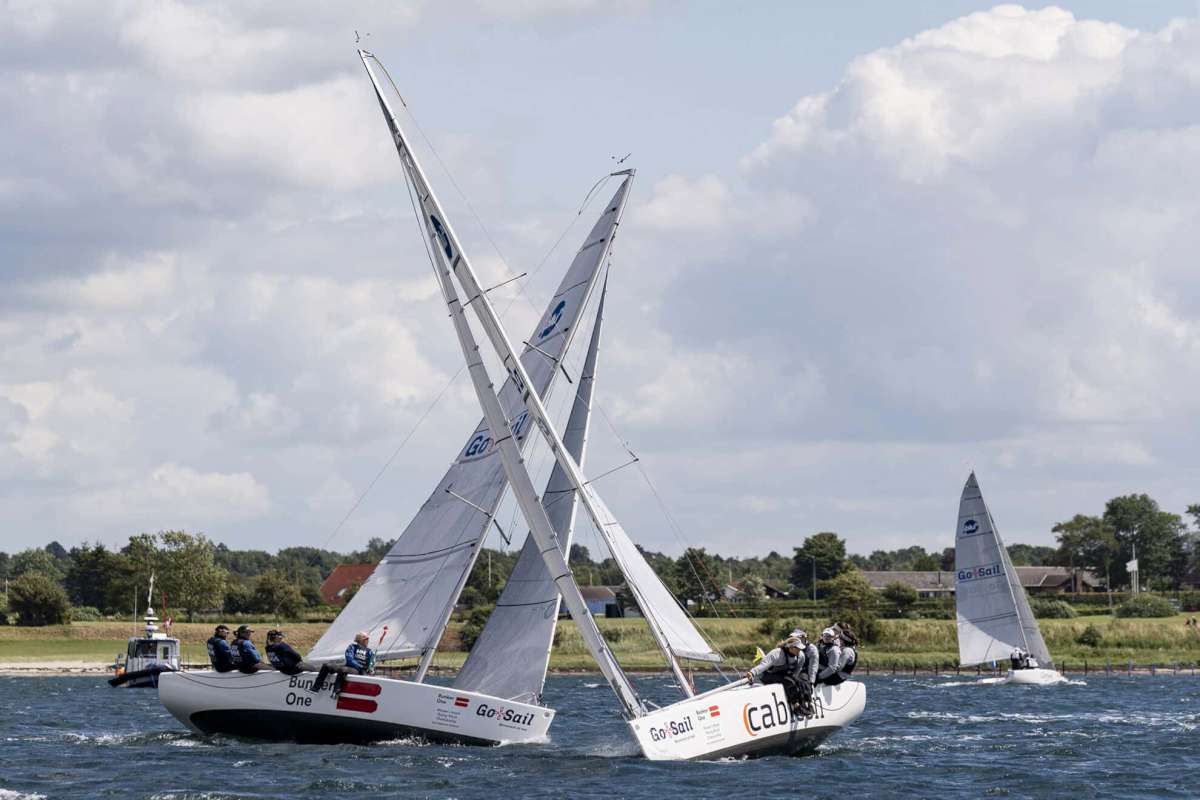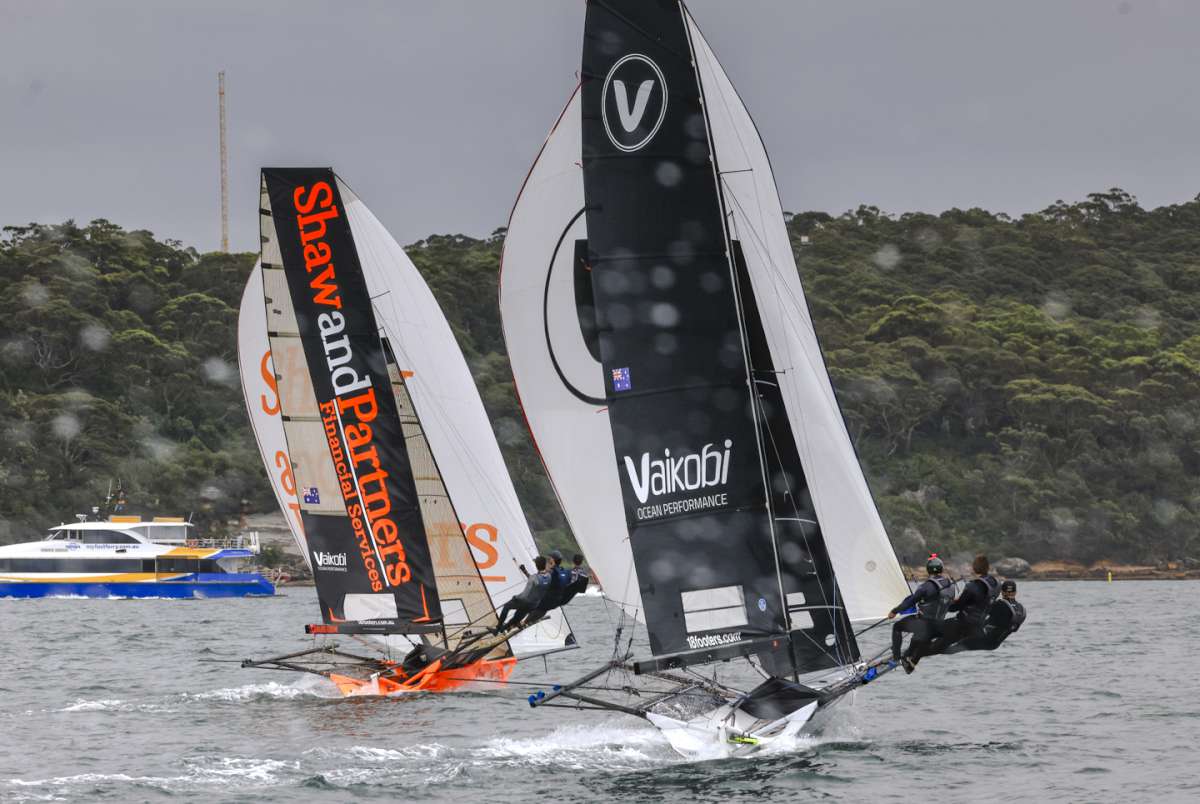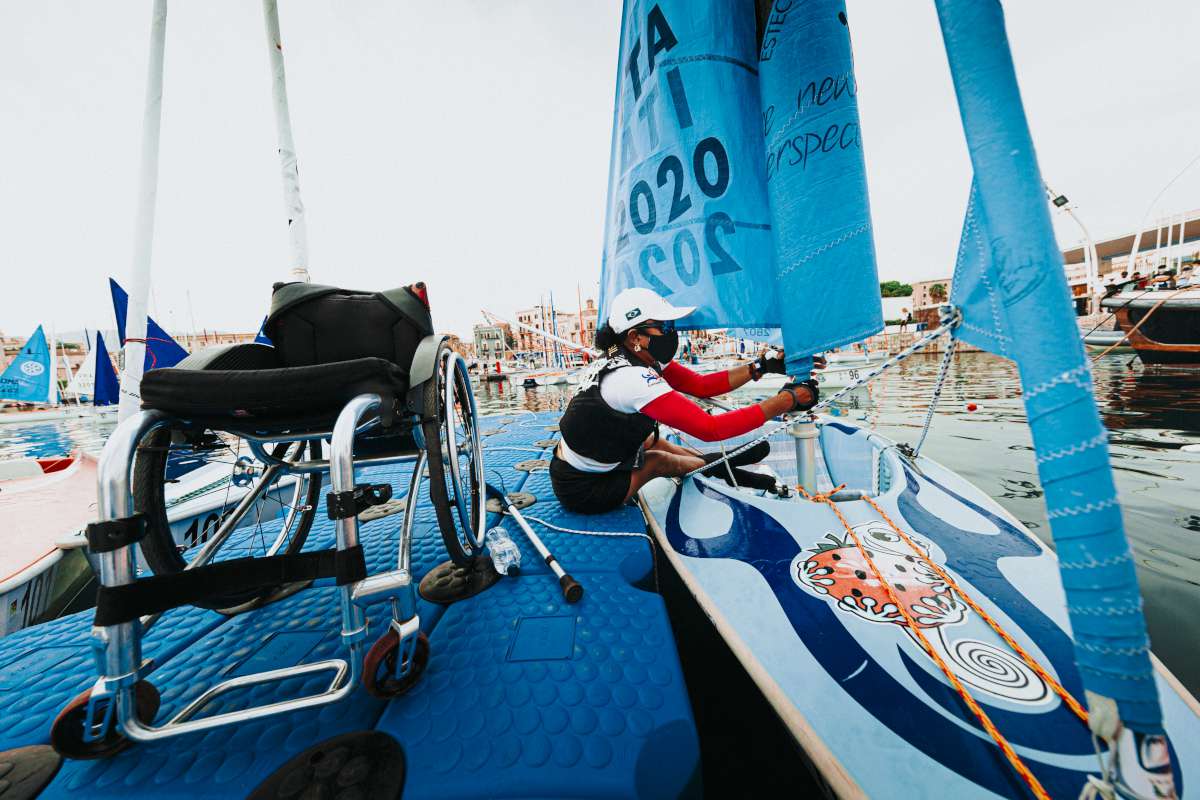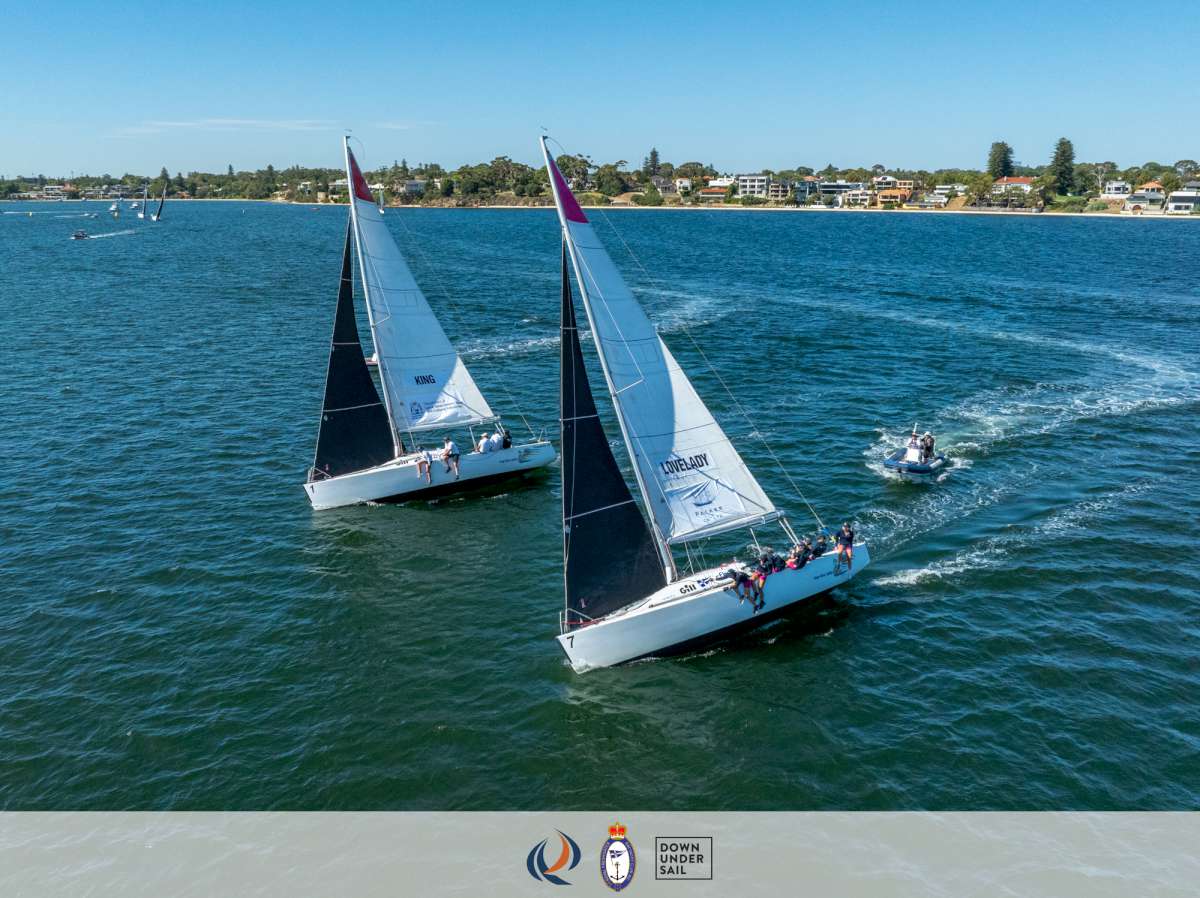Ask sailors about their adventures in the South Pacific and they will rave about the whales in Tonga, the surf in Fiji and the volcanoes in Vanuatu but not many people mention New Caledonia.
In fact, before we sailed through the Havannah Pass and into the lagoon that surrounds La Grande Terre, we heard very little about the place. The few people we met who were planning on stopping in New Cal said it was little more than a way to break up what can be a rough passage to Australia; a safe harbour to wait out weather, restock supplies and make repairs.
No one mentioned how beautiful the landscape was, the palm trees fringing the shoreline as the tall colonial pines climb the rugged, red hills. They kept the well protected anchorages, great sailing and free moorings a secret. It also must have slipped their minds to tell us New Caledonia is one of the few places left in the world that is still free to visit; no charges to arrive or depart and no pesky harbour fees.
The more I got to know about New Caledonia, the more I fell in love with this South Pacific gem.
Getting in
New Caledonia is one of the world’s largest atolls and to sneak inside its protected lagoon we first had to traverse Havannah Pass.
We had our fair share of atolls and reef passes back in French Polynesia, so we took the warnings in the guidebooks seriously. Arriving anywhere new can be nerve wracking but, with the wrong combination of winds and tides, this pass is known for its steep and often dangerous overfalls.
Thankfully due to a sudden, but light, westerly wind shift we arrived at the pass not only at first light but just after slack tide. We raced over smooth water with 10 knots on the nose and only the headsail flying, watching the SOG climb close to 9kt.
The leads and markers high above on Cape Ndoua were just as the book described, very conspicuous. Between them and the other cardinal marks it was no problem to navigate our way through the pass and into calmer waters.
Much to our delight the French do not use the ‘black stick and rebar’ method of navigation so popular in the South Pacific. It was such a relief to sail where reefs are not strewn with wrecks but cardinal marks; and channels have leads and sector lights, all of which illuminate at night.
As in other Pacific French islands we have visited, the charts were not only complete but correct. There was no watching our little boat on the chart plotter sail over land. That is not to say that we took our eyes off things, but it did relieve that tightness in the pit of my stomach that I often get when sailing somewhere unfamiliar.
Havannah Pass, however, was just one piece of the puzzle, there was still 35 nautical mile, the Woodin Canal and several reefs and hazards to navigate before we reached Noumea, the only official Port of Entry in the country.
It was late afternoon before we rounded the corner and made our way through the channel markers into Noumea Harbour. Our guidebook indicated that there were designated anchorage areas and, although the publications are a few years out of date, we were not expecting to find the harbour full of private moorings.
Boats of every size, shape and stage of decay cluttered the harbour, there was little room to drop the hook. If we did we would be on a lee shore and if the winds changed direction we’d have very little swing room. Although we prefer to anchor, it just was not an option.
We hailed Port Moselle Marina on the VHF hoping they would have space on its visitors dock. Happily they could squeeze us in; in fact they will grant any foreign flagged vessel at least three days alongside if they have room.
Although we arrived after the marina office had closed, the on-call staff were friendly and helpful. After lending a hand to tie up they made sure we had check-in instructions for the next day and, perhaps more importantly, a key for the shower block and a password for the free WIFI network.
After a cold beer, a hot shower and a full night sleep we got an early start the next morning. We expected the usual official visits and time-consuming paperwork, which accompany check-in, would take most of the day but were pleasantly surprised when the marina office said they could file our inbound customs clearance for us.
There would also be no need to visit the Port Capitan for arrival clearance. All that was required of us was to make it to the Immigration Office before they shut for the day at 1130, then return to the boat to wait for Quarantine to visit.
Using the map complete with photos, which was provided by Port Moselle, we had no troubles finding Immigration tucked away on the second floor of a rundown old building further up the harbour. The officers were smiley and courteous and, without question, gave us three months in the country.
Shortly after stepping back onboard Kate the Quarantine officer arrived. He fired off a few questions, asked us to cook our last egg, told us where to deposit our trash and bid us good day.
Not only was check in uncomplicated and quick, but the fact that it was free made it seem all that much more pleasant. Now that we had all the formalities out of the way it was time to explore.
Getting about
Like all Overseas French Territories (OFT), Noumea has all the trappings of France: good wine selection, cheap baguettes and an overwhelming cheese aisle in the grocery store.
The town is broken into sections: Chinatown, the Latin Quarter, Port Moselle and the Beaches. Hours can be spent walking around exploring. Sidewalk cafes and watering holes abound, but a schooner of local draft will set you back about CPF$1000 (South Pacific Francs), so either bring a well-padded wallet or a bottle of water.
One of my favourite activities while in Noumea was our trip to the Parc Zoologique et Forestier Michel Corbasson, a large and meandering bird park that sits atop one of the high hills outside town. Not only does the park have lovely walking trails that snake through the cool forest but it is probably the best and perhaps only, chance you will get to see a Cagou.
The Cagou (or Kagu) is a shy and endemic bird that lives only in the interior highlands of New Caledonia. Featured on their money the Cagou is not only a point of pride for New Caledonians, it is also an endangered species. It is an almost flightless bird whose numbers are threatened by introduced dogs, cats and pigs and loss of habitat, all thanks to us humans.
The park is home to these and several other types of birds that are native to Oceania and is well worth the $5 entrance fee and walk up the rather steep hill.
After a couple of days at the marina we were ready to untie the dock lines. We were suffering from culture shock, not because we were in an OFT and my high school French was stretched to the max., but because we hadn’t been around this many boats in years.
Port Moselle Marina has five finger pontoons each accommodating over 60 boats and, except for the few spots left at the visitors dock, there was almost no vacancy. Coupled with the congestion outside the breakwater it seemed like there were masts as far as the eye could see.
It was time to get away from the crowds.
Getting around
We decided to sail back southeast to explore a large inlet we had seen on the way in, Baie de Prony.
The charts and guides indicated that there were several anchorages in the area, there was a good spot to hide if a westerly happened to blow through and even a recommended hurricane hole.
On our sail into Noumea we had somehow timed our passage correctly, not only through the Havannah Pass but also through the Woodin Canal, a wide but dog-legged channel that is prone to tidal currents. In fact our light winds had all but petered out after sunrise and we were left motoring on glassy seas for most of the day.
Our trip back south would prove to be a little more challenging, with winds and tide against us it was rapidly apparent that we would not make it to the western end of Woodin Canal before dark or, more importantly, at slack water.
We had our pick of anchorages north of the canal and tucked into Baie Uie for the evening. The tall hills provided plenty of protection from the wind and the slowly shoaling bottom of the deep inlet was excellent holding, a perfect combination for a good night sleep.
On the morning tide we slipped though Woodin Canal and even found room to tack around shipping traffic.
The weather report had the trades freshen for the next several days so we made our way to an anchorage in the NE corner of Baie de Prony and threw the hook in a secluded bay surrounded by pine trees. That afternoon, while dragging a lure behind the dinghy, we found a river that snaked into the forest. Unfortunately at low water the mouth of the river was blocked by a sand bar so we made plans to explore the following morning on high tide.
We woke early to a clear morning, packed a light breakfast and filled the thermal mugs with coffee. We tucked in behind the sandbar and the river opened up into a wide, shallow waterway that was surrounded by tall pines.
Hidden on the banks were the ruins of an old penal colony, the almost foot thick stone walls still intact. The river meandered through the woods and then terminated in a small waterfall that was bathed in warm morning sunlight and protected from the wind by trees.
We sat quietly on the rocks, eating breakfast and listening to the gurgle of cool, clear water collecting in a bathtub size pool at our feet. It was soon agreed that a picnic lunch and afternoon swim were in order, even if we had to carry the dinghy back over the bar.
For the next few weeks we moved around the large bay, spending a few nights in each anchorage before sailing to the next. Our days are spent exploring beaches, snorkeling on vibrant coral reefs and watching Peregrine falcons loop and reel above us as we both fish for our dinner.
In the evening we listen to the local weather bulletin broadcast on the VHF. It is comprehensive but exclusively in French, so the French/English dictionary gets a good workout as we pick our way through any unfamiliar metrological terms.
Although we see several other yachts in Baie de Prony we only share an anchorage when we pick up a mooring in Baie Majik. The moorings were laid to protect the coral and marine zones throughout the bay. They are well-maintained and free, two words you do not often hear in the same sentence.
We want to hike up to Pic Ndoua, the lighthouse and leads that can be seen on the cape. The lighthouse was originally built in the 1880s, first serving as a telegraph station and beacon, guiding vessels through the Havannah Pass.
As viewed from the pass it sits atop 200 metre red earth cliffs that drop steeply into the ocean but it is obscured by the rolling hillside in the anchorage.
The guidebook does not mention that the hike is particularly difficult, so we are expecting to find a long winding walking trail when we get ashore. Instead we walk along a one lane road that is groomed and in some places paved. For 30 minutes we march a near vertical straight line through the forest and onto red dirt plains. By the time we reach the top my cheeks are
rosy and I have to brace myself against fresh trade winds that blow uninterrupted across
the barren hillside.
The day is clear and the views are breath-taking, or it could just be that my lungs are still burning from the hike up. As we take refuge in the wooden visitor centre that is sheltered from the wind, the reefs and islets that we will have to avoid when sailing south are clearly visible. We do not spot any whales but on the hazy horizon we can make out L’ile des Pins.
With provisions dwindling and a few boat projects on the list we decide to head back to town.
It is a downwind run and with light winds we hoist the kite and speed down the channel under sunny skies. As we get closer to town we see that several others are out taking advantage of the good weather, colourful kites and sails dance along the horizon at Ouen Toro.
As in many atolls and French territories we visited there is an active kiteboarding and windsurfing community in New Caledonia, as well as several sailing clubs that offer dinghy sailing lessons for kids and adults. Ouen Toro is a very tall and green park zone and we watch as a series of paragliders run down a cleared runway from the top and launch themselves into the air, their bright parachutes sweeping wide elegant arcs above the fast moving kite boarders below.
With so many boats in Noumea it is not surprising that there are several well stocked chandleries about town. We decided to convert our removable wire inner forestay to a soft dyneema setup and test sailing it in the relatively calm waters inside the lagoon before we depart for Vanuatu and points further north.
Despite our bumbling along in poor French trying to explain nautical terms, the staff at all the stores we visit are friendly and helpful and we have no problems finding everything we need to do the job. At surprisingly fair prices.
Getting back
A couple nights on the dock, a few trips to the market and several piles of dirty laundry washed we are ready to escape again.
We are drawn back to Baie de Prony with hopes that a passing system forecast for the following week will bring some northerly winds. From there we would be in a good position to sail south to the famed L’Ile des Pins, or Isle of Pines.
For the blow that is forecast we decide to try the suggested hurricane hole, a large protected haven tucked into the far northern corner of the bay. Again we are surprised to have the place to ourselves having seen several boats moving around early in the day.
The guidebook says there is a hot spring nearby so we set off in the dinghy hoping to find a worn path or perhaps a small sign indicating where it might be. As we motor around the corner we are surprised to see a well-built wharf complete with a shiny stainless boarding ladder at the end.
The path from the long jetty disappears into the underbrush; no building, no privacy sign, no people. We stop to take a look and are delighted to find not a just a natural hot spring lined with rocks but a large wooden floored pool that is refreshed with an underwater vent and is surrounded by benches and picnic tables. So civilised, so French!
In the coming weeks the winds do not do as predicted, instead they remain fresh and southerly; there is no good window to sail south. We keep ourselves busy exploring until the outboard konks out and a trip to town is required to see if we can round up parts.
We set out on an overcast morning, the winds fresh and from the southeast, as they have been for weeks. By the time we get close enough to town that it should be visible, a heavy fog and rain have settled in and we can barely see 30m ahead of us. Rugged up in foulies to ward off the mid-winter chill on such a miserable day we are comfortable heading in in such poor conditions, as now we are familiar with route.
Just when the weather seems to clear I notice a flapping noise coming from the bow and look up to find the headsail ripped from UV strip to luff 2/3 of the way up. As I roll the headsail away the grey day seem even gloomier.
Thankfully the headsail ends up being an easy fix and after a couple hours with the sewing machine over the weekend, I repair what turned out to be just a ripped seam. It turns out that this will be our last trip to town, fate has rolled the dice for us and an expected e-mail means we have to hightail it to Vanuatu.
We have no luck in town with the outboard. The parts could be ordered but we can not be sure if it will take six days or six weeks, the broken English/French conversation on the phone too confusing. Looks like we’ll be rowing until further notice.
Getting out
Checking out is bittersweet, we would like to stay until our visa runs out, even though the process was just as easy as our arrival.
This time we are required to visit immigration, customs and the Port Captain, everyone is polite and friendly and the last walk around town a nice farewell to Noumea. We pass on getting duty free fuel; the winds have been so steady we have barely worked our way through half of what we bunkered in Fiji.
We are officially given 48 hours to leave the country, but even that is not enough time for the weather to clear. When we untie the dock lines for the last time at Port Moselle we stick our nose out into 20 to 25kt trade winds.
We hoist a staysail on the new Dyneema inner forestay, what better conditions to break it in with. It takes us a whole day of hard sailing, every inch a fight against the wind and tide, every tack a tangle of lines as we get accustomed to working with two headsails.
We squeak through Woodin Canal for the last time, another half an hour and current probably would have made things a lot more interesting. It is almost dark by the time we pick up a mooring at Ilot Casey and, despite being dressed in sweaters and beanies, the crew is cold and getting cranky.
It is a lather, rinse, repeat performance the next day when it takes us most of the morning to crawl the last 10nm to Port Bois, the closest anchorage close to Havannah Pass, where we have to overnight in order to catch the outgoing tide at daybreak.
Looking over our track on the chart plotter as we finally clear the reef I count almost 30 tacks between Noumea and Havannah Pass. It seems like New Caledonia does not want to let us go.
We thoroughly enjoyed our time sailing and exploring the Grande Terre. The large lagoon protected us from the open ocean swell while the tradewinds blew steady, the sailing was world class. Anchorages were excellent and plentiful and when we tired of the secluded surroundings the city of Noumea was always there to welcome us back.
We never made to the Isle of Pines, or got a chance to stop at the Loyalty Islands offshore, the winds just did not cooperate.
No matter where we go there will always be a beautiful island we missed, or a perfect anchorage we never found, but as the French say, c’est la vie!


























